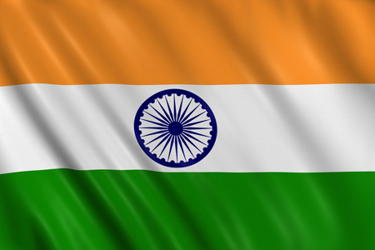Is Your Intellectual Property Safe With Indian CROs And CDMOs?
By Gunjan Bagla, Amritt Inc.

Please note: This is not a legal document, although I have included input from attorneys based in the USA and in India. The objective is to give American life sciences companies a lens through which to view any business dealing with India.
With Congress considering the Biosecure Act, which would limit dealings with companies headquartered in China, many life sciences players are looking at alternatives to WuXi, BGI, and other Chinese entities for new deals. This is another case where a China Plus One approach leads many startups as well as Big Pharmas to consider India as a possible alternative. India has 1 million professionals working in biotech and companies distributed across many parts of the country. India also provided COVID-19 vaccines to far more people than Pfizer and Moderna did. But is India a safe country in which to do business?
Let’s take a deep dive.
History
India boasts a heritage of ancient sciences like Ayurveda, Siddha, and Unani, with knowledge codified and documented over centuries. Its government vigorously opposes attempts to patent products it believes are based on this existing wisdom.
Modern science validated the medical and health benefits of ancient Indian ingredients like turmeric and ginger. Cultural sensitivity is crucial in engaging with Indian counterparts, who may feel their traditional knowledge is mocked by the West, hindering trust-building efforts.
Western concerns arose regarding intellectual property rights (IPR) starting in 1970, when India modified its Patents Act, favoring process improvements and essentially invalidating product patents for drugs, leading to a domestic pharmaceutical boom. Success by these Indian companies in the U.S. market followed the Hatch-Waxman Act of 1984, which encourages the production of generic medications.
India became a founding member of the World Trade Organization (years before China was admitted) and this meant changing its IPR laws. India's compliance with Trade-Related Aspects of Intellectual Property Rights (TRIPs) in 2005 marked a shift, necessitating adaptation to a stricter intellectual property framework. Balancing India's rich heritage with evolving global standards requires mutual respect and understanding.
Compulsory Licensing
Compulsory licensing is a legal process by which a government can require an entity to grant an involuntary license of its patent to other companies. The licensor is paid a royalty for the use of its patent, but the amount is not freely negotiated between the patent holder and the licensee.
Doctors Without Borders, the French group that won the Nobel Peace Prize in 1999, and American activist William Haddad were instrumental in the next major episode of concern for Western pharmaceutical companies.
The AIDS epidemic was killing millions in Africa. The best way to control it was highly active anti-retroviral therapy or HAART, a cocktail of three drugs that cost $12,000 a year per patient in the United States. The founder and CEO of Indian company Cipla, Yusuf Hamied (born of an Indian father and a Lithuanian Jewish mother), said he could produce and sell the combination for $350 per year. The Cipla drug combination was two tablets of 40 milligrams of stavudine, two tablets of 150 milligrams of lamivudine, and two tablets of 200 milligrams of nevirapine. The legal and PR battle that ensued still casts a shadow on today’s conversations. According to Indian attorney Anoop Narayanan, Indian patent law permits the possibility of a “compulsory license” under specific conditions.
One such license was granted in 2012 to Natco Pharma of Hyderabad, India, for the purpose of producing a generic version of Nexavar, which is used in the treatment of liver and kidney cancer. Natco was directed to pay a 6% royalty to Bayer and to restrict its sales to India. But in 2013, India rejected Mumbai-based BDR Pharmaceuticals’ application for a compulsory license for the Bristol Myers Squibb cancer drug Sprycel. In 2015 India’s Lee Pharma filed an application for compulsory license for a patent covering AstraZeneca’s diabetes management drug saxagliptin, which also was rejected. I could not find many other significant examples of compulsory licenses issued in India.
A “voluntary license” was granted by Gilead to 10 Indian companies for the production of its tenofovir disoproxil fumarate. Gilead receives a 5% royalty on the sales of this generic version of its AIDS treatments, and this global access program supplied 1.2 million patients over a 10-year period. Sofosbuvir from Gilead, a hepatitis C drug, is now widely available thanks to voluntary licensing agreements with 11 Indian generic companies, and during the Covid pandemic, remdesivir was licensed to a number of Indian companies.
American attorney Matt Fedowitz, who has extensive experience in India, points out that compulsory licensing is not permissible under American law. Fedowitz says that compulsory licensing has been opposed by many groups by arguing in part that exercising the government use license and/or march-in rights over the end price of a product would disincentivize industry from licensing university inventions in the future and would harm the system of innovation that the Bayh-Dole Act established. He adds that revocation of exclusive rights and compulsory licensing by government decree could shake investor confidence, drying up critical venture funding needed to commercialize new technologies and bring them to market.
“Evergreening”
Evergreening is a pejorative term applied to pharmaceutical companies that allegedly seek to artificially extend the life of their patent or other exclusivity by obtaining additional protections to extend the monopoly period. Sometimes this might involve adding a time-release feature or changing the delivery mechanism.
India’s patent office sometimes resists granting patents by applying Section 3(d) of the Indian Patents Act in situations where it believes that a company is trying to extend the life of a patent by making minor inconsequential improvements. AstraZeneca faced this in its effort with the stroke-related drug ticagrelor. However, in the years since implementing TRIPs and by the thoughtful messaging from American trade groups, the Indian patent system has harmonized closer to global practices. With this better understanding and objectivity while assessing inventions pertaining to pharmaceutical compounds, it has led to a reassessment of evergreening. Particularly, the “recent setting of IP Divisions at the High Courts of India is a welcome change in questioning various established practices at the patent office, thereby creating an environment to push the envelope,” according to attorney Ravi Bhola.
Is There A Risk Of IP Theft By Indian Companies?
I asked my attorney friends if they could find or cite examples where an Indian pharma or biopharma company or an employee of such an Indian company had stolen intellectual property or trade secrets belonging to an American or European company. The findings were quite slim.
Narayanan from Mumbai cited this one example: Seattle-based pharmaceutical company HDT Bio sued the Indian pharmaceutical company Emcure Pharmaceuticals in the U.S. for the theft of HDT’s trade secrets. In 2020, Emcure’s subsidiary, Gennova Biopharmaceuticals, obtained a limited license to use HDT’s technology consisting of HDT’s COVID-19 vaccine and delivery platform to develop and sell a COVID-19 vaccine in India. HDT became aware that Gennova had separately developed the vaccine that Emcure and Gennova were testing in Phase 3 clinical trials, which is largely the same as HDT-301. HDT filed a suit against Emcure alleging misappropriation of trade secrets. In December 2023, U.S. District Judge James Robart in Seattle ruled in favor of the Indian company and dismissed the lawsuit by HDT.
Fedowitz said he was not aware of any examples and upon online research, came up with the same case above.
In fact, India’s courts have often sided with foreign companies in IP-related disputes. The Delhi high court restrained Indian drug companies — including Natco Pharma, Torrent Pharma, Eris Lifesciences, and Windlas Biotech — from marketing generic copies of the popular combination valsartan and sacubitril, responding to a suit filed by Novartis. The court ruled that the generic versions infringed the patent held by Novartis. In both examples above, the disputes related to drugmakers in India, not to contract manufacturers.
Notably, among the CROs, CDMOs, and CMOs in India, I could not find any case where a foreign company’s IP had been compromised.
Steps To Protect Your Intellectual Property
I asked the attorneys how an American company should protect itself when subcontracting work at an Indian entity.
Fedowitz stated, “They should have an articulated and clear SOP regarding the limited disclosure of trade secrets to individuals. With regard to patentable subject matter, to the extent that they are concerned about its theft in a particular country then they should pursue patent rights to cover that technology. By proceeding through these avenues, enforcement of the patents can be pursued through the courts in India.”
According to Vishal Gandhi, “To mitigate this risk, the American company should conduct thorough due diligence on the Indian company, its investors, principals, and directors.”
While this may seem obvious, I often get asked to troubleshoot relationships where the American company had relied on nothing but a kind of Dun & Bradstreet check and a signature on their typical domestic American contract. Most Indian companies are honest, but at Amritt we believe that international relationships must always start on the principle of “trust but verify.”
Thereafter, the U.S. company can make filings in India to protect its intellectual property, such as filing for patents, copyrights, and trademarks. Finally, an agreement must be entered into with the Indian party that contains adequate protections, including a liquidated damages clause, injunctive relief clauses, and so on, as appropriate for the Indian environment.
India is trying to be more friendly to international businesses and to startups. Narayanan adds, “Indian patent and trademark laws have been amended recently to offer financial as well as administrative benefits to small companies. For instance, a startup or a small/medium enterprise can take advantage of significantly discounted official fees and the option to expedite the processing of their trademark or patent applications from filing stage until the grant, subject to certain conditions.”
Summary
American and Western companies can generally be confident that, with some care, they can be quite safe in working with Indian suppliers of services.
Acknowledgement
Thank you to the following attorneys for their insights:
- Anoop Narayanan of ANA Law Group
- Jeffery Daar of Daar & Newman
- Matt Fedowitz of Buchanan, Ingersoll & Rooney
- Vishal Gandhi of Gandhi Associates
- Ravi Bhola of KNS Partners
About The Author:
 Gunjan Bagla is CEO of Amritt, Inc., a California-based consulting firm that helps Western companies do business in India. Organizations that have benefited from Amritt's expertise include Becton Dickinson (BD), Biocom California, Combe, Clorox Healthcare, Johnson & Johnson, iHealth, and Roche. He writes about India for the Harvard Business Review and for Med Device Online. He holds a mechanical engineering degree from the Indian Institute of Technology Kanpur and an MBA with honors from Southern Illinois University, Edwardsville. Gunjan is a frequent speaker on subjects relating to India’s healthcare, biotech, and medical device ecosystem. You can reach him on LinkedIn.
Gunjan Bagla is CEO of Amritt, Inc., a California-based consulting firm that helps Western companies do business in India. Organizations that have benefited from Amritt's expertise include Becton Dickinson (BD), Biocom California, Combe, Clorox Healthcare, Johnson & Johnson, iHealth, and Roche. He writes about India for the Harvard Business Review and for Med Device Online. He holds a mechanical engineering degree from the Indian Institute of Technology Kanpur and an MBA with honors from Southern Illinois University, Edwardsville. Gunjan is a frequent speaker on subjects relating to India’s healthcare, biotech, and medical device ecosystem. You can reach him on LinkedIn.
